I’m making a 1780s Indian chintz inspired pet-en-l’aire.
I’ve been holding off on telling you about this project, because I didn’t want it to turn into one of those things that takes 8 months to make (and maybe never quite gets finished at all) and is difficult to follow as a reader. But I’m determined to have it done in time to be worn for the Afternoon Tea talk (which has sold out!) just over a week from now. So I hope it’s safe to start blogging the story!
The pet was inspired by this fabric:
Yum!
It’s block printed Japanese silk habotai, and when I bought it, it was an obi. I just couldn’t resist.
It was just so, so, so perfect for a late 18th century garment. The colour scheme, the small scattered floral, the slight imperfections in the print. It would be even more perfect if it was cotton, since Indian and Chinese silks were usually hand painted, rather than block printed, but I’m willing to settle just a little.
Because it started out as an obi, which yields about 4 metres of 15″ wide fabric, I didn’t have enough to make a full robe and petticoat. Instead, I decided on a pet. Something like this:
And this:
The print is closest to the Met pet, but I’m using the shape of the MCG pet as my primary inspiration for the cut of the garment, mainly because I love the front stomacher with its contrast bows (can’t you just imagine dark red silk bows?).
To start with I constructed a little bodice to support the structure of the pet:
Sometime between sewing the channels to hold the back bones and working the eyelets I decided I was going to handsew the entire rest of the pet. So everything but the side seams and the boning channels is hand sewn, with varying degrees of skill and elegance.
This is not my best eyelet effort ever.
My support bodice includes the centre-front stomacher, so the pet will basically have a false stomacher, with the effect achieved by stitching down the side pieces over the stomacher. I don’t know if this is accurate or not.
With the support done I figured out the best use and layout of 15″ wide panels across the shape of the pet, and cut the rough lengths needed and sewed them together.
Next: Pleating the back and attaching it to the bodice support. But first, more images of the fabric for you to drool over:
Did you know that yellow and black were worn in support of the deposed monarchy in Revolutionary-era France, because they were Austria’s colours? This fabric is like the cowards version: add a little red and white, so that it works with the tricolour too!


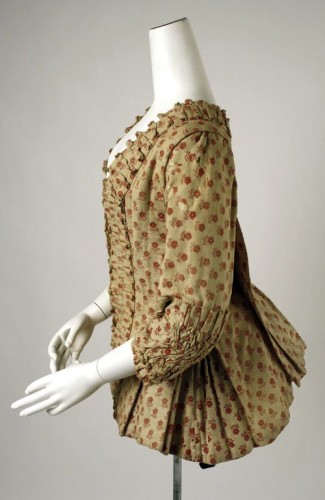


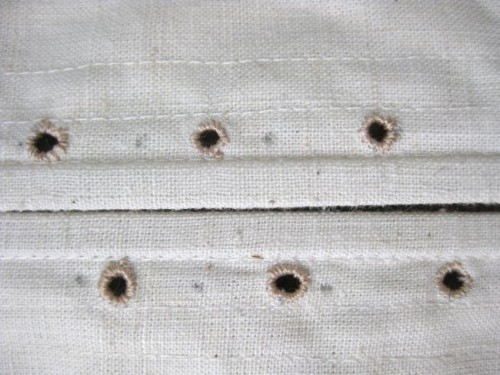
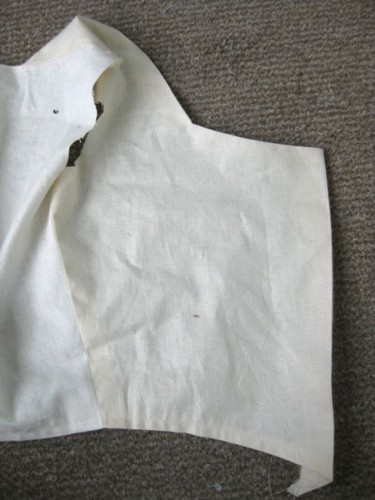
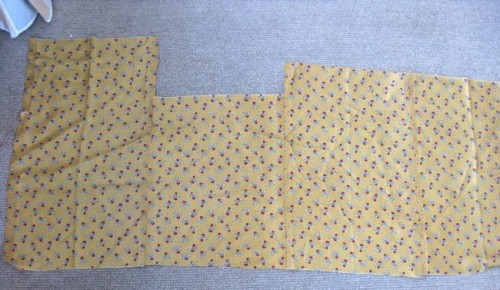
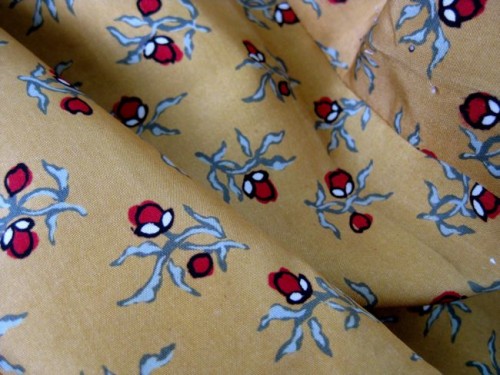
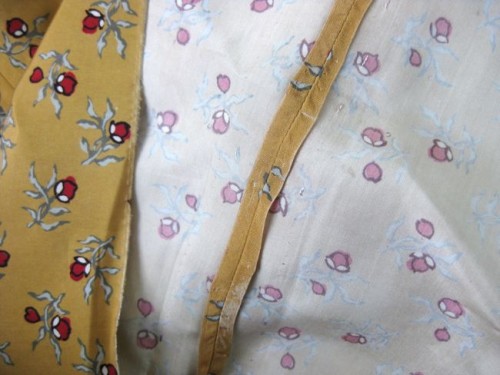
I can’t wait to see this done and on you! The false front stomacher is indeed accurate – comperes front (sorry, no accent mark as there should be) – so no worries there 🙂 I love your fabric, and the nod to the importance of colors in Revolutionary France 🙂
Oh, I know the false front stomacher is accurate. I’m just not sure my construction method is. Arnold’s compere fronts, for example, seem to be made up separately, and then attached, whereas mine is just built on to the under-structure.
Actually, they wore yellow and black to show support of The Hurricanes. It’s a well known fact. Even if rugby hadn’t been invented, or Wellington! 😉 Gorgeous!!
Totes. Clearly we all need to reinforce this by going to Hurricanes matches in our 18th century yellow and black outfits. What will yours look like?
That print is just perfect.
Isn’t it just? I was so thrilled when I found it.
What a wonderful garment! You fabric is wonderful, and the dark red silk bows will be a joy! A pet. Very nice word. Happy sewing – I am looking forward to seeing the garment on you. What are you planning to wear on the bottom half?
The garment won’t be on me for the first wearing. For now I am pairing it with a petticoat I have already made, this one.
Lovely fabric and so perfect for this purpose! More!
More is coming! I just have to sew, photograph, and blog to keep up with it.
Love it!
I think 18th century garments are so beautiful and graceful on just about all women, and the jackets don’t require a lot of fabric, either. I look forward to seeing your finished product too!
Thank you. So do I 😉